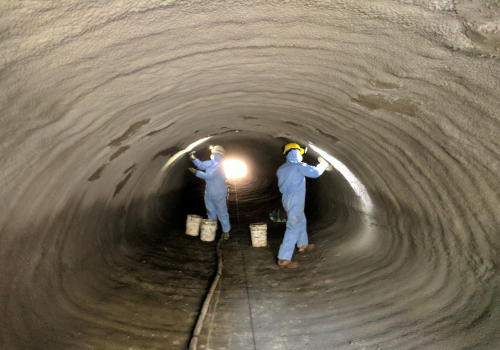Introduction
As the world continues to rely on an aging network of pipelines to transport essential resources such as water, oil, and gas, the need for pipeline rehabilitation becomes increasingly evident. Over time, pipelines are subjected to corrosion, leaks, and structural deterioration, which can lead to significant economic and environmental consequences. In this blog post, we will explore the concept of pipeline rehabbing, its benefits, and how it is revolutionizing how we address aging infrastructure.
Understanding Pipeline Rehabbing
Pipeline rehabbing refers to restoring, repairing, and rehabilitating existing pipelines to extend their operational lifespan. In contrast to traditional pipeline replacement methods, rehabbing offers a cost-effective and less disruptive solution that maximizes the value of existing infrastructure. By leveraging advanced technologies and innovative approaches, rehabbing can address various issues that pipelines commonly face, including corrosion, leaks, cracks, and reduced flow capacity.
Benefits of Pipeline Rehabbing
- Cost-Effectiveness: One of the most significant advantages of pipeline rehabbing is its cost-effectiveness compared to complete pipeline replacement. The process eliminates the need for excavation and extensive downtime, significantly reducing overall costs. Additionally, rehabbing can be completed in a fraction of the time required for replacement, allowing for quicker restoration of pipeline functionality.
- Environmental Protection: Rehabbing minimizes the environmental impact associated with pipeline replacement. Preserving existing infrastructure reduces the extraction of new resources, energy consumption, and carbon emissions. This sustainable approach aligns with global efforts to reduce our carbon footprint and promote eco-friendly practices.
- Improved Safety: Rehabbing helps enhance the integrity and safety of pipelines. Addressing corrosion, leaks, and other structural issues significantly reduces the risk of catastrophic failures. Regular inspections and maintenance during the rehabbing process ensure that pipelines remain safe and reliable, safeguarding both the environment and public health.
- Increased Operational Efficiency: Aging pipelines often suffer from reduced flow capacity due to corrosion and deposit accumulation. By rehabbing the pipelines, their internal surface is restored to its original condition, facilitating efficient fluid transport. Improved flow capacity reduces energy losses and operational costs, benefiting pipeline operators and end-users.
Innovative Technologies and Techniques
- In-Situ Lining: In-situ lining involves inserting a polyurea flexible liner into the existing pipeline, eliminating excavation. The liner is then expanded to fit the internal diameter of the pipeline, creating a new, corrosion-resistant surface. This method is particularly effective for rehabbing smaller diameter pipes and offers a quick and cost-effective solution.
- Cured-in-Place Pipe (CIPP): CIPP is a trenchless technology used for the structural rehabilitation of larger diameter pipes. It involves the insertion of a flexible fabric liner impregnated with resin into the pipeline, followed by steam or hot water curing that solidifies the liner and creates a new pipe within the existing one. CIPP is widely used due to its versatility, durability, and minimal disruption to the surrounding environment.
- Robotic Rehabilitation: Robotics is revolutionizing pipeline rehabbing by enabling remote inspection, cleaning, and repair. Robotic tools equipped with cameras and sensors can access and navigate pipelines, identifying problem areas and performing necessary repairs. This technology reduces human intervention, increases efficiency, and enhances the quality of rehabbing operations.
Conclusion
Pipeline rehabbing offers a cost-effective and sustainable solution to address the aging infrastructure within our pipeline networks. By preserving and restoring existing pipelines, rehabbing minimizes costs, reduces environmental impact, improves safety, and increases operational efficiency. Innovative technologies and techniques, such as in-situ lining, CIPP, and robotic rehabilitation, are driving the advancements in this field, enabling efficient and effective rehabilitation processes. As we continue to face the challenges of maintaining our aging infrastructure, pipeline rehabilitation emerges as a vital tool to ensure the reliable and sustainable transportation of essential resources for generations to come.
Click here if you want to learn how you can become a certified polyurea applicator?


2 comments